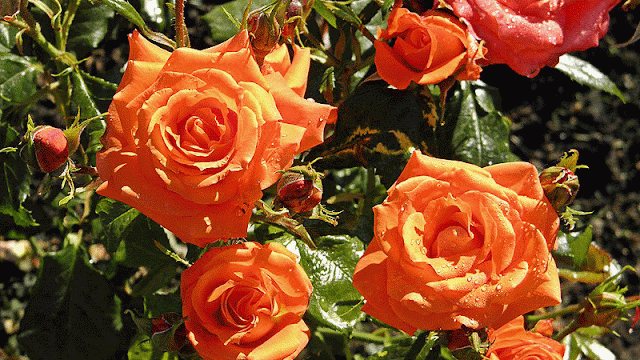Top 10 Rose Gardening Tips for Beautiful Blooms
Top 10 Rose Gardening Tips
Roses are a beloved flower, known for their beauty and fragrance. Whether you're a seasoned gardener or new to rose gardening, these top 10 tips will help you achieve beautiful blooms all season long.
Choose the Right Location
Roses thrive in sunny locations, so choose a spot in your garden that receives at least 6 hours of direct sunlight each day. Good air circulation is also important, so avoid planting your roses too close to walls or other structures.
Plant at the Right Time
The best time to plant roses is in the spring, after the last frost has passed. This gives the roots plenty of time to establish themselves before the heat of summer. Fall is also a good time to plant roses in milder climates.
Provide Adequate Water
Roses need plenty of water to thrive, especially during hot, dry weather. Water deeply and regularly, making sure the soil is moist but not waterlogged. Avoid getting water on the leaves, as this can encourage fungal diseases.
Fertilize Regularly
Roses are heavy feeders and benefit from regular fertilization. Use a balanced fertilizer, such as a 10-10-10, and apply it every 4-6 weeks during the growing season. Be sure to follow the manufacturer's instructions and avoid over-fertilizing, which can damage the plants.
Prune Properly
Pruning is essential for healthy rose bushes and beautiful blooms. Remove any dead or damaged wood, as well as any crossing branches that can rub against each other and cause damage. Prune back to a healthy bud or outward-facing leaf. In general, prune roses in the late winter or early spring, before new growth begins.
Keep Pests and Diseases at Bay
Common rose pests include aphids, mites, and thrips, while common diseases include black spot, powdery mildew, and rust. Regular monitoring and early intervention are key to preventing and treating pest and disease problems. Use organic or chemical controls as needed, and be sure to follow the label instructions carefully.
Mulch for Moisture and Insulation
Mulching helps to retain moisture in the soil and regulate soil temperature, protecting the roots from extreme heat and cold. Apply a 2-3 inch layer of organic mulch, such as shredded leaves or bark, around the base of your rose bushes.
Deadhead for Continued Blooming
Deadheading, or removing spent blooms, encourages the plant to produce new flowers. It also helps to prevent disease and pest problems. Use sharp, clean pruning shears to remove the spent blooms, cutting back to a healthy bud or outward-facing leaf.
Consider Companion Planting
Companion planting is the practice of planting certain plants together for mutual benefit. In the case of roses, consider planting them with other plants that have pest-repelling properties, such as garlic or marigolds. You can also plant roses with other flowers that bloom at different times, creating a beautiful and ever-changing garden.
Enjoy Your Roses!
Finally, remember to enjoy your roses! Whether you're admiring them in your garden or cutting them for a vase, roses are a beautiful and rewarding addition to any landscape. With proper care and attention, your rose bushes will provide you with beautiful blooms for years to come.
Rose gardening can be a fulfilling and rewarding experience for anyone with a passion for plants and a desire to create a beautiful outdoor space. By following these tips, you can ensure that your roses thrive and produce stunning blooms year after year. Remember to choose the right varieties for your climate and soil, prepare your soil properly, provide adequate water and fertilizer, prune your roses at the right time and in the right way, protect your plants from pests and diseases, and give your roses the care and attention they need to thrive. With patience, dedication, and a love for the beauty of nature, your rose garden can become a true masterpiece that will bring joy and delight to you and your loved ones for years to come.



